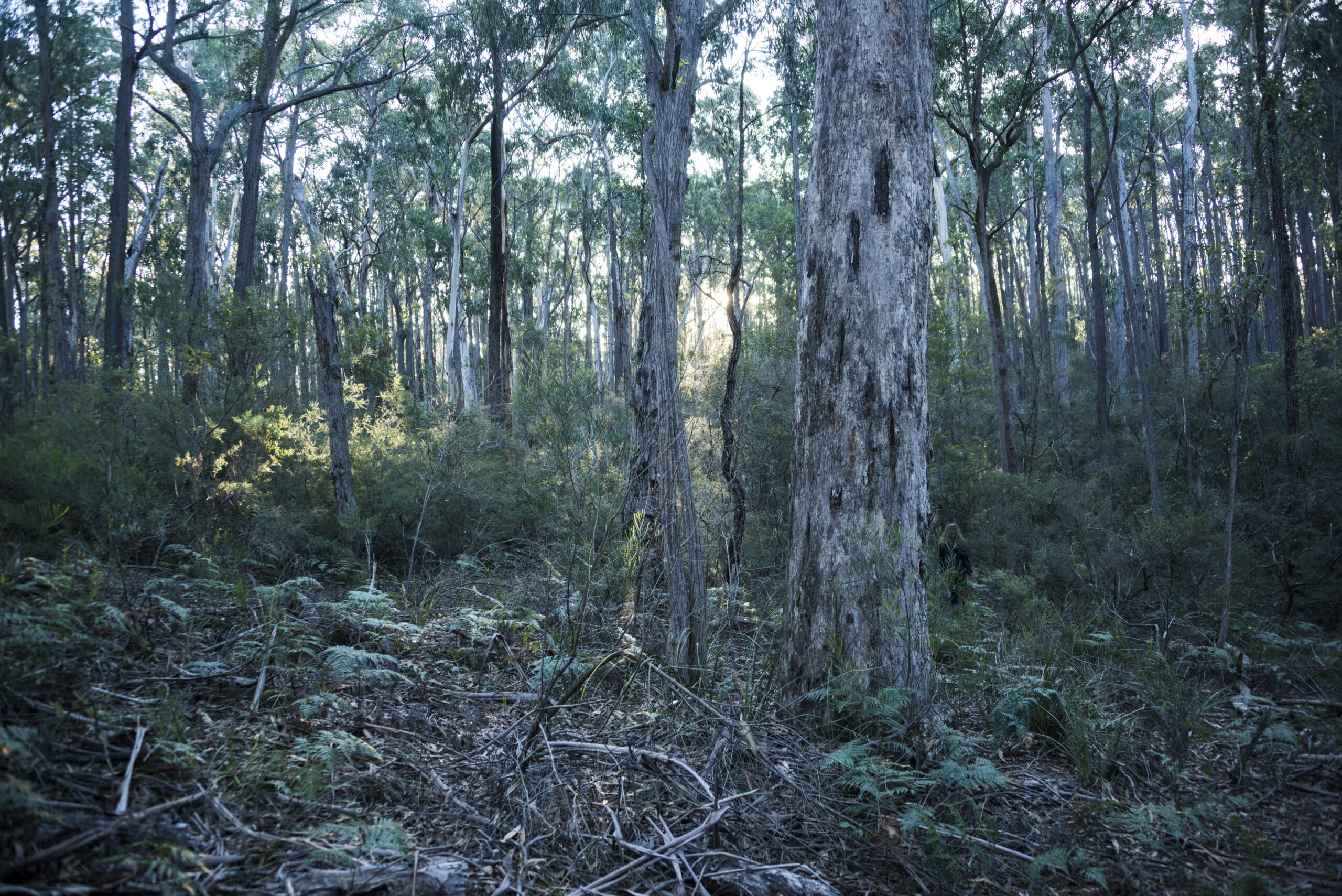Immersing in post-bushfire recovery in East Gippsland
References
The smoke plume that rose from the 2019-20 Australian bushfires was the largest one recorded in our time1,according to NASA satellite imaging. Through relentless media feeds across those months, I witnessed the decimation of human lives, the landscape and wildlife alongside vast areas of the built and natural environment. It was not long before the smoke itself began cloaking the city of Melbourne on Kulin Country, several hundred kilometers from the fires.
Many stories from the Black Saturday bushfires in 2009 revealed an emphasis on rebuilding homes rather than establishing strong rehabilitation methods for people’s social, psychological and economic recovery2, and a tension between state-led versus community-led efforts to recover. After the 2019-2020 bushfires, I began a year-long journey as Innovation Fellow within the Department of Architecture at Monash University. My application was shaped by a desire to understand the lessons learnt, as both a non-Indigenous first-generation Australian late in gaining a true and holistic representation of our history, and also as a practicing architect torn between rebuilding as business-as-usual, within a state-sponsored, top-down system, and the possibility that I was hindering recovery by failing to adapt rebuilding and design processes.
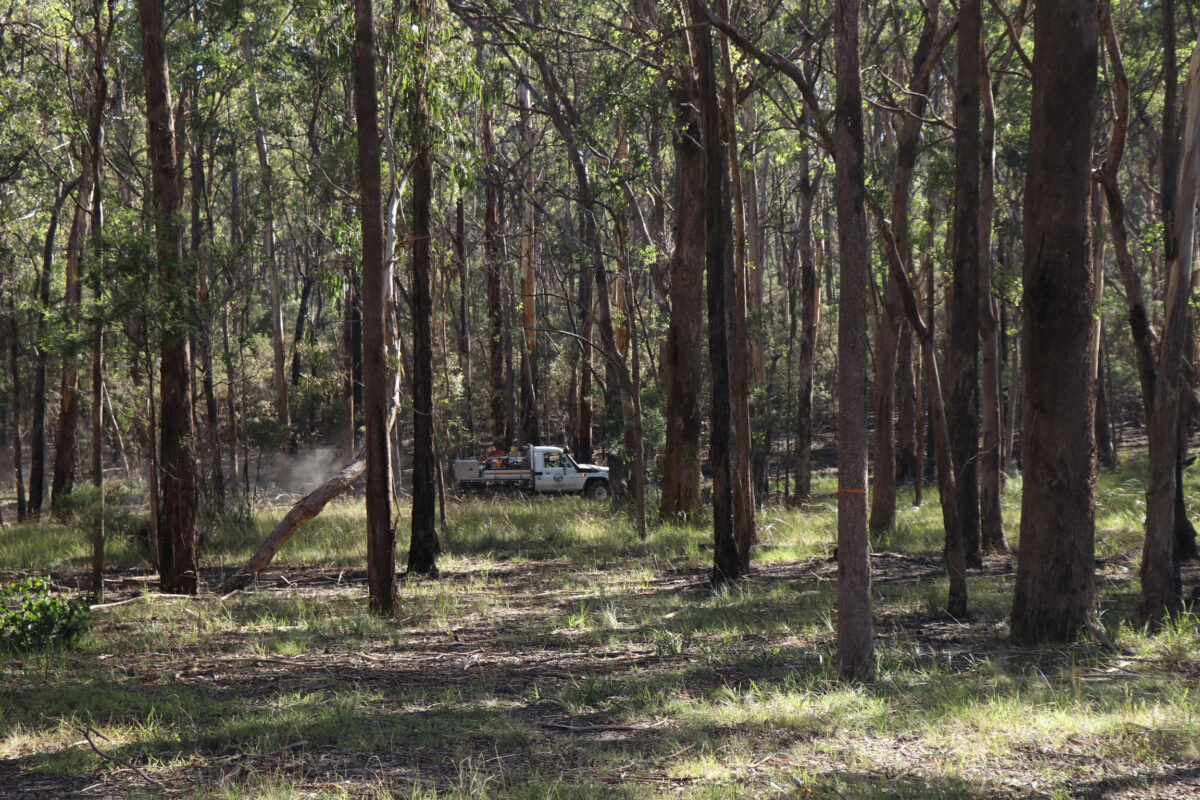
Connection and co-creation
Traditionally the genius loci— spirit of a place—of any architectural work is critical. While this concept may overlap with notions of Country, regardless, often little of either is contemplated during hegemonic recovery practices, especially around the built environment. Can sites and places of recent tragedies even ‘recover’ without a deeper understanding of historical traumas that have annihilated the genius loci of these lands in centuries past?
In East Gippsland, the closest point of impact of the fires from where I live, the Gunaikurnai people are the Traditional Owners of the land and waters spanning from Warragul to Orbost. There, my students and I met several leaders from Gunaikurnai Land and Waters Aboriginal Corporation (GLaWAC), the Registered Aboriginal Party (RAP) that jointly manages Bukkan-Munji, as well as various other cultural sites and water bodies, with Parks Victoria (PV) and the Department of Environment, Land, Water and Planning (DELWP). According to Daniel Miller, who was General Manager of ‘On Country’ work when interviewed and who is now GLaWAC’s CEO, GLaWAC’s mission is to support a common Traditional Owner perspective that everything works together as a system. Losses aren’t simply seen as trees burnt or animals lost, but are perceived in the context of a conjoined network of land management, culture and the healing of people, directly correlating to the healing of Country; initiatives often involve “taking the community along for the ride”5.
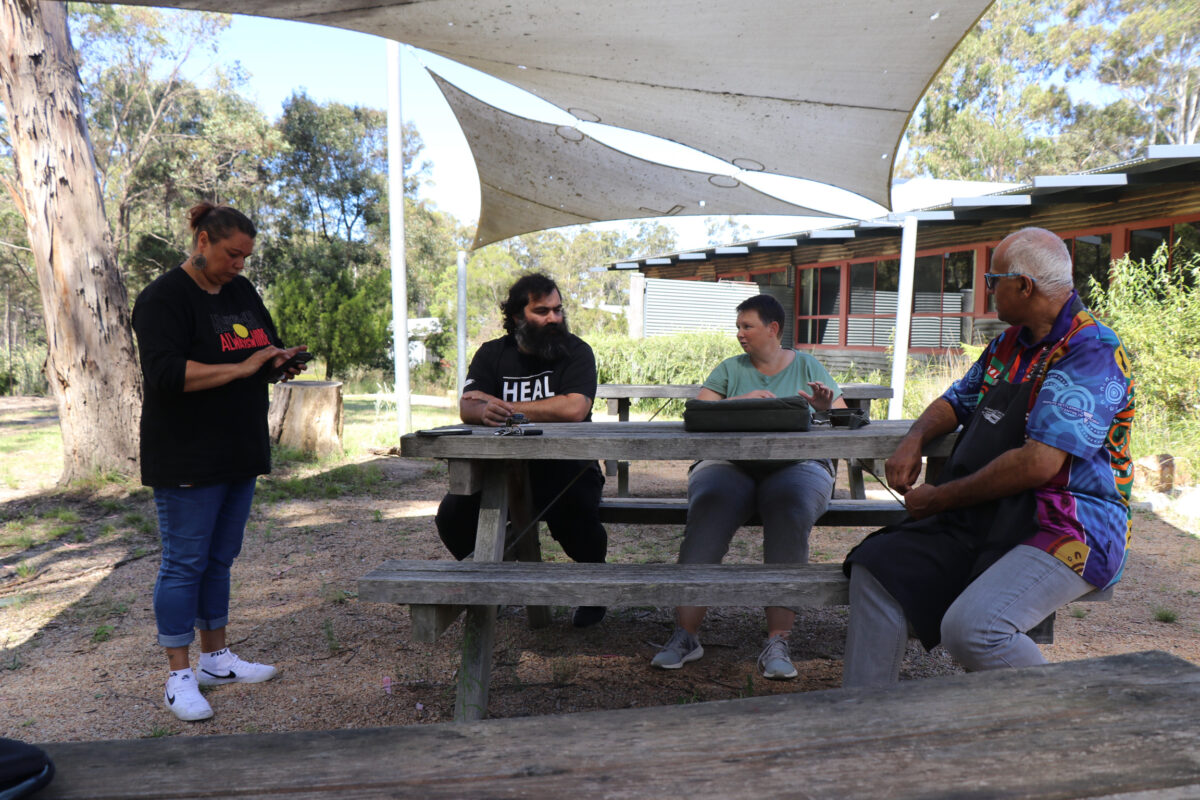
Necessarily, GLaWAC straddles two worlds when connecting bushfire management to this cultural ethos. One involves contributing to PV and DELWP’s bureaucratic hazard reduction burning processes, while the other allows for a “rediscovery” of cultural burning practices. Shaping what cultural burning is for Traditional Owners today is critical to their mission6.
There is a counter narrative to recovery that is all too often masked by the dominant story, and responding to disasters is often not as simple as offering our services to affected people without changing the modus operandi.
The idea of everything being connected encapsulates a tension in traditional architectural practice: we have been raised within a discipline that often values product over process; output in isolation of social and cultural context. But little attention is paid to how architectural work responds to certain landscapes and places, especially in trauma-informed contexts. In the face of disasters such as the 2019-20 bushfires, reconstructing and rebuilding what was destroyed versus understanding the ‘particularity and potentiality of a place’7 before building anything at all continues to be a mired facet of recovery. Fracturing the design process in order to co-create and ensure that all “owners,” beyond only the fiscal ones, legitimately benefit from the work, felt like the most responsive way to operate.
Deconstructing the design process
After the fires, DELWP awarded a significant amount of funding to GLaWAC to develop the Wangun Amphitheatre on their grounds surrounded by the Colquhoun State Forest. GLaWAC’s aims were for this outdoor space to be for the wider Gunaikurnai community to showcase cultural performances, ceremonies and educational programs. The amphitheatre’s facilitation of intrinsically outdoor cultural practices involving dance, fire and smoke were to be core elements of the prospective design. Pondering Miller’s comments that recovery for Gunaikurnai people was more than the direct environmental losses, the project had a sense of being a long-awaited recovery—and perhaps revival—of Gunaikurnai traditions. When completed, this project would provide a face to the community. It would not only offer a safe space for Traditional Owners to gather, but also an opportunity for non-Indigenous people to better understand the holistic nature of Aboriginal land management practices.
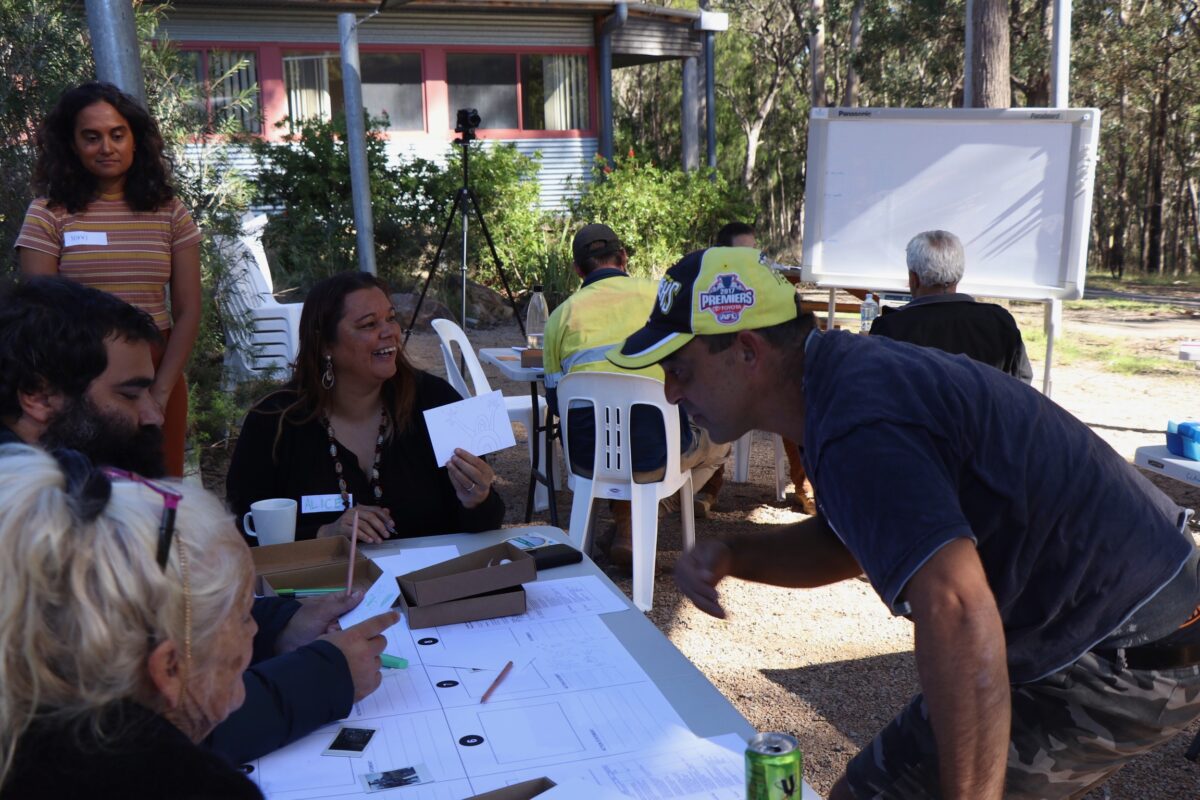
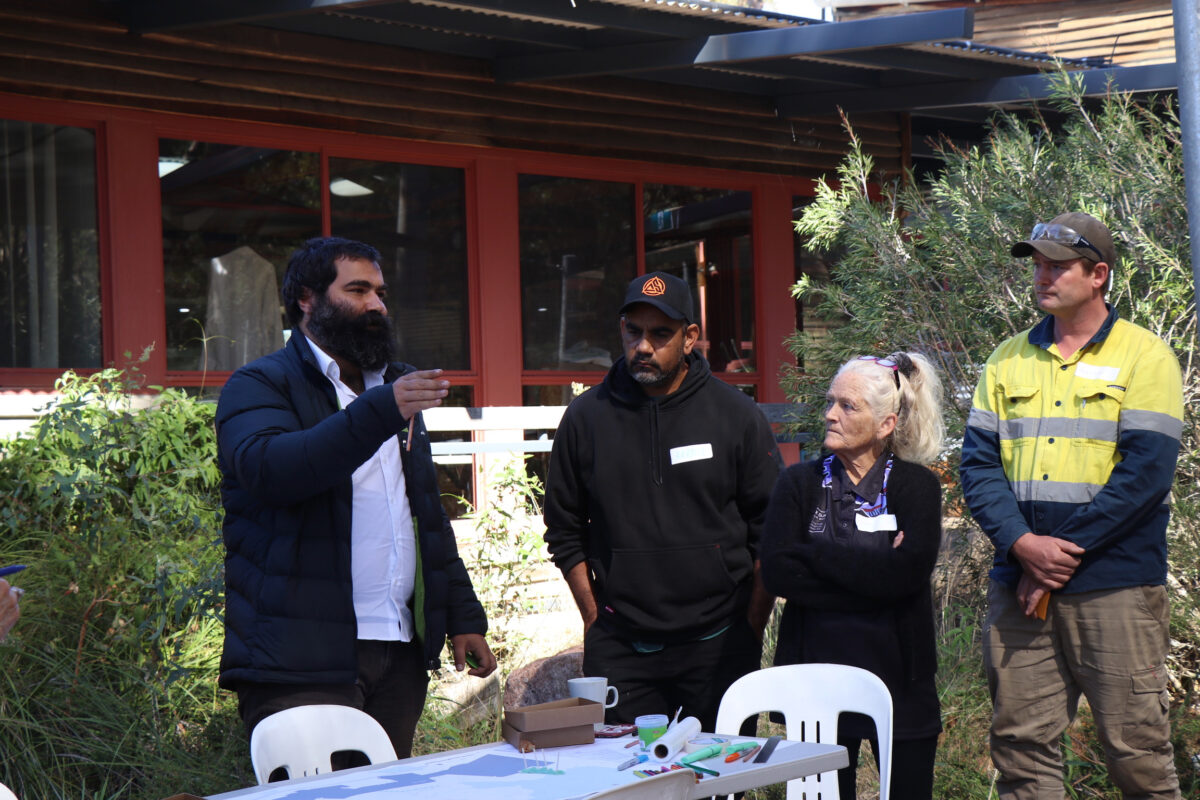
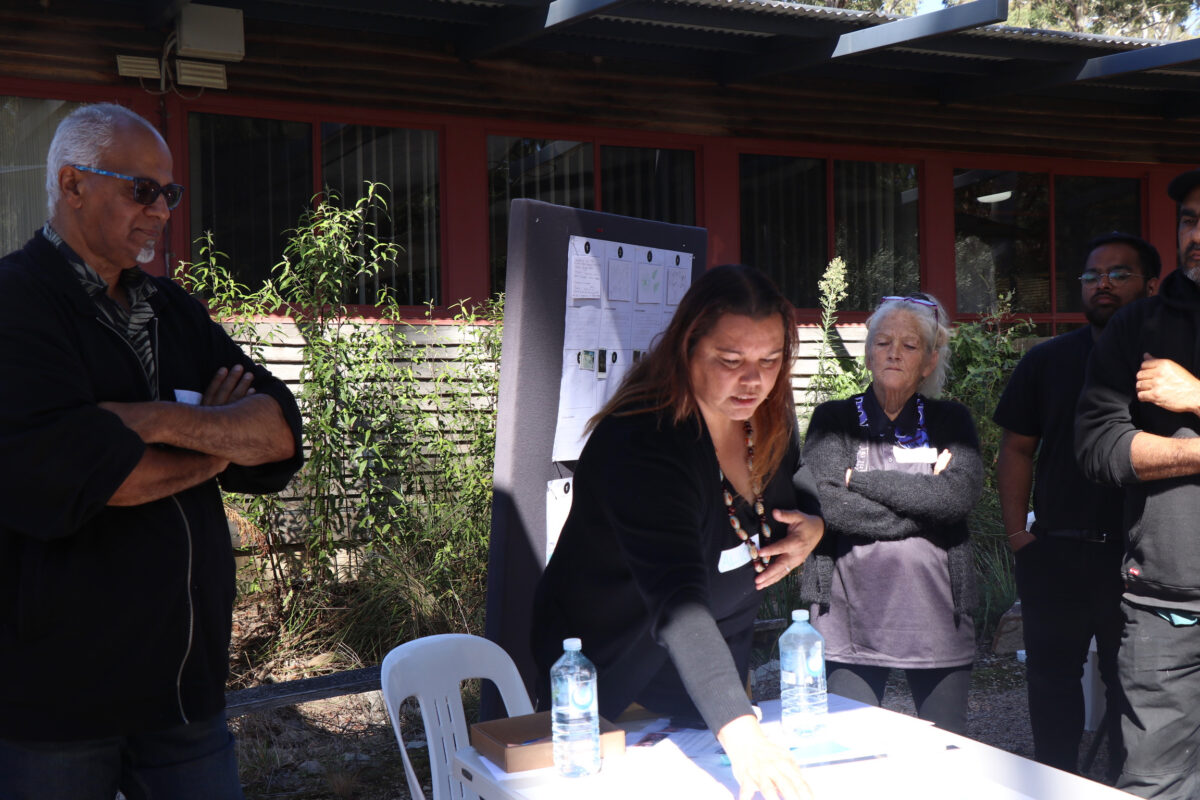
Our first workshop on Country involved a cross section of GLaWAC staff—a mix of Indigenous and non-Indigenous as well as several Traditional Owners8. It was a vibrant morning filled with humorous mooting on the particularities of the amphitheater and detailed discussions on how to translate cultural symbology into spatial ideas. Many responses deviated from the workshop prompts, forcing us to rethink our own understanding of an honest co-creation process.
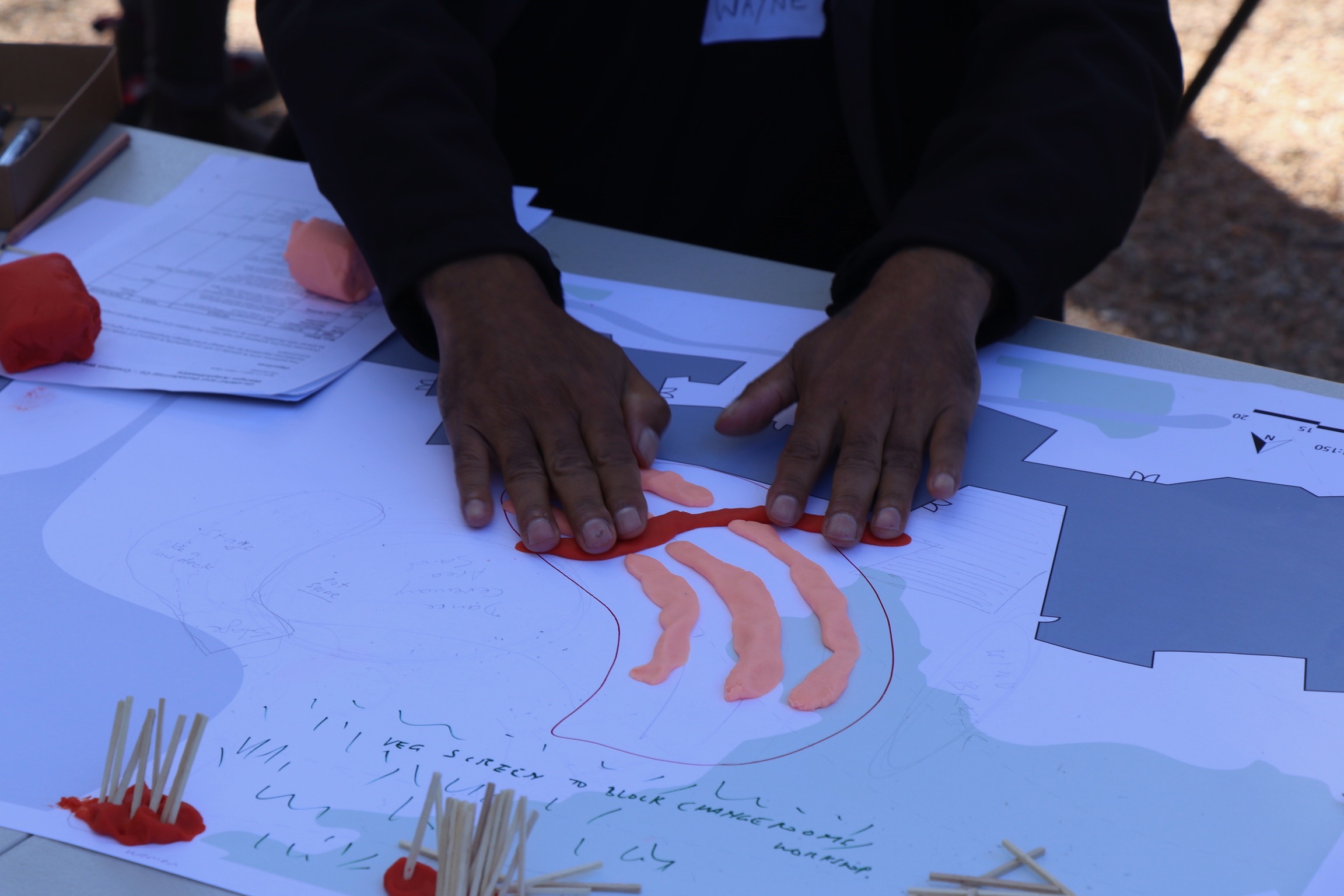
Wangun, meaning boomerang in Gunaikurnai language, is an important symbol for many of the Traditional Owners. Aspirations for the stage and its roof to be shaped, quite literally, like a traditional wangun, were made quite clear. We quickly understood that the ways in which culture could be translated respectfully into the architecture was diverse and non-prescriptive, hence also a rediscovery of sorts. It relied just as much on our design responses to the ideas of the Traditional Owners as it did on the ideas themselves, with a key ingredient being leaving our presumptions at the door. Striking a balance between the concepts we design and those we allow to emerge9 is what strengthens our offering as architects.
A place for recovery

Shortly after concluding the fellowship, GLaWAC engaged my architecture practice to undertake the design commission for the Wangun Amphitheatre.
There is a counter narrative to recovery that is all too often masked by the dominant story, and responding to disasters is often not as simple as offering our services to affected people—for free or otherwise—without changing the modus operandi. It is simplistic to replace a building that has been burnt down with another one, as the Gunaikurnai perspective that all things work together highlights. For many Gunaikurnai communities, it was difficult to respond to the recent fires in isolation of the slow onset recovery so many were already enduring, across generations. The loss of culture, coupled with land management and cultural burning practices, has had to be reconciled with the immediate losses faced by their wider regional communities. While Wangun does not replace any of GLaWAC’s tangible assets, what it can offer is something intangible: a place for recovery to occur.
- BBC News, “Australia Fires: Smoke to Make ‘full Circuit’ around Globe, Nasa Says,” January 14, 2020.
- Madeleine Morris, “Black Saturday Rebuilding Led to ‘underutilised’ Infrastructure That Pushed Rates Higher, Residents Say,” 2015.
- Gunaikurnai Land and Waters Aboriginal Corporation, “Joint Management,” 2021.
- Lake Tyers Aboriginal Trust, “Home,” 2022.
- Daniel Miller, General Manager On Country, GLaWAC. Interview by Nikhila Madabhushi. Voice Recording, December 11, 2020.
- Daniel Miller, Christy Bryar, and Justin Leonard. MTalks: Adaptive Recovery. Interview by Nikhila Madabhushi. Public Talk, January 28, 2021.
- Till, Jeremy. “Urban Weaving.” In 6(0) Ways– Artistic Practice in Culturally Diverse Times, edited by Lilet Breddels, Lex ter Braak, and Steven van Teeseling, Rotterdam: NAI Publishers, 2010.
- A workshop with Gunaikurnai Elders Council was cancelled due to “sorry business” (a death in the community).
- Hamdi, Nabeel. The Placemakers’ Guide to Building Community. Tools for Community Planning. London ; Washington, DC: Earthscan, 2010.
